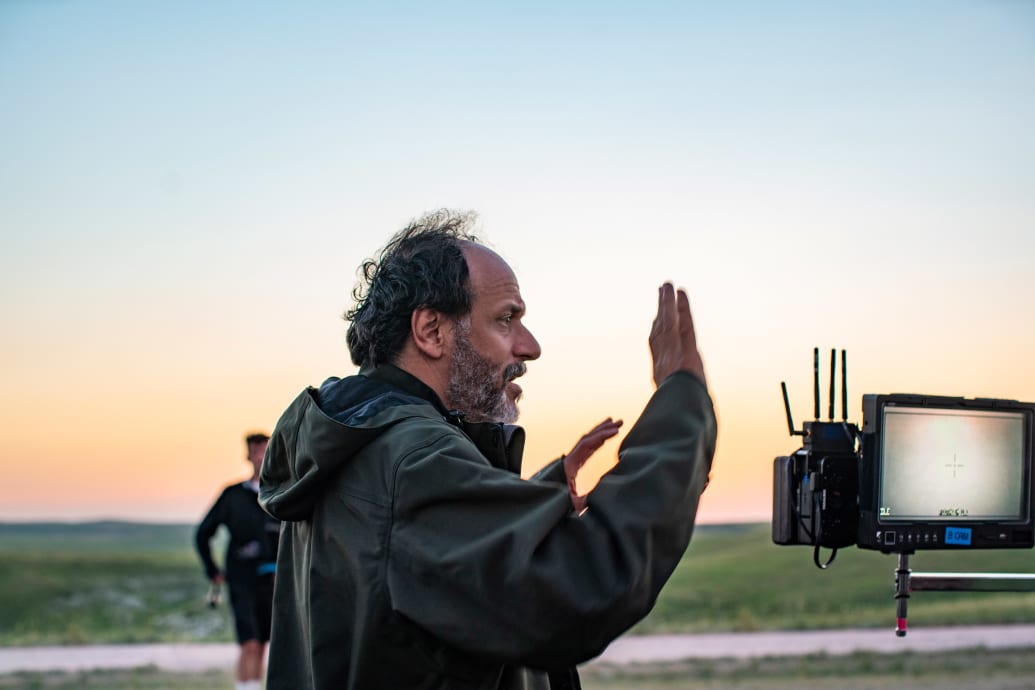Growing up in the great plains of the Midwest, I was always jealous of kids living in fabled places like New York or Los Angeles. These were the kids who, unlike me, got to see their surroundings represented in media so often. Films and television told me that cities like those were important; they were where bigwigs made even bigger decisions, and drama, sex, love, and humor constantly collided at the speed of two taxicabs racing during rush hour. Meanwhile, the only representation I ever got of Bismarck, North Dakota, was the local news broadcast, which held a world record for the number of different ways newscasters figured out how to say, “It’s going to snow.”
In my 28 years of life, I’ve seen a total of three films that accurately depict the rich and complicated lives of people who live in the Midwest. There’s Fargo, the Coen Brothers’ 1996 film that paints us as hokey, hickish sentimentalists who lead with a “You ‘betcha!” (a caricature that isn’t exactly off the mark); God’s Country, Louis Malle’s 1985 documentary about a rural Minnesotan town that’s basically become lost media; and now, Bones and All, Luca Guadagnino’s epic love story about two teenage cannibals in the 1980s, road-tripping through a part of the country disregarded by the rest of the world.
I’ve never met a cannibal—at least, I don’t think I have. If you’re to believe the lore of Bones and All, they walk among us, plain as day, only able to be discerned by their own kind. And though their nature is murderous, their humanity is still very much intact. Take, for instance, Maren, played with stunning, wide-eyed compassion by Taylor Russell. Her uncontrollable impulses have alienated everyone she loves since she was a child. After she sneaks out to a sleepover and takes a friend’s finger home with her, Maren and her father flee their trailer in Maryland for Ohio, hiding out in a pocket of the country where people are forgotten all the time.
Maren’s mother abandoned them years before, and a few weeks after this incident, Maren wakes up to find that her father has done the same. All he’s left her is some petty cash and a cassette with her life’s story on it. Forced to battle her compulsive hunger on her own, Maren sets out for Minnesota—where her mother supposedly resides—in a desperate and disparate search for answers. So begins Maren and Bones and All’s sprawling journey through the Midwest, passing through Indiana, Illinois, Nebraska, and Iowa along the way. On her quest, Maren meets Lee (Timothée Chalamet), a more experienced “Eater,” as they’re called; the two are bonded by their shared dispositions. Together, they work to protect each other while managing their urges, always running but never able to fully escape.
Metro Goldwyn Mayer
Bones and All seeks to portray the Midwest, Great Plains, and Appalachia with an authentic beauty and vitality that oft goes unnoticed by outsiders. It also makes room for all of the pain and trauma that vibrates within these areas’ invisible boundaries. The landscapes are vast and stunning, but all that freedom can prove just as isolating as it does beguiling. Walk-up Dairy Queens with soft-serve cones dripping onto hot stone pavements sit alongside broken homes and long-standing trauma, always lingering just out of sight. These are places blighted by the ideological rot caused by religious indoctrination, years of ingrained conservative politics, the opioid crisis, queerphobia, and racism. They’re also filled with the kindest, least judgemental, and most fascinating people you’ve ever met. That gentle side of the divided dogma is why, even after nearly a decade in the once-mythical town of New York City, I still consider the Midwest to be my home.
When I mention to Guadagnino that I was moved by his portrayal of the untapped romance in the Midwest, I earn a slight smile. “I like to find things that are hidden away,” he tells me, in a Zoom interview ahead of the film’s release. “I wouldn’t go for a place that is known when I explore cinema. I like to go for what I don’t know…or what I want to see for the first time—cast a light upon.
“I love that [Maren and Lee] were facing this brutal nature they were not able to run away from,” Guadagnino continues, “and yet they were trying to fight it and find a way to love within this bleakness.”
“Bleak” is precisely how I’d describe staring down nothing but the sun-drenched, wide-open plains at a formative age. The first time I dropped out of college (yes, the first time), I returned home to North Dakota from the tiny university town of Morris, Minnesota. I was a lost soul, barely 18 years old. With no clear future ahead of me, I spent far too many afternoons behind the wheel of my busted-up 2002 Mitsubishi Galant, driving on roads I didn’t recognize until I managed to reach the South Dakota borderline. I listened to Lana Del Rey’s “Ride” on repeat, as if it were a great American hymnal. I drove to remember why the place I lived all my life was so special, and to remind myself of why I eventually had to leave it for good.
When I first saw Bones and All a few months ago, I was struck by how vividly I could see myself in Maren and Lee, as they made their defining journey through the Midwest. When I was their age, I felt just as misplaced—a young, queer kid trying to grapple with the enormity of my feelings in the most unforgiving of places. I always felt like I was the only one, and it wasn’t until I left home it became so immensely clear that I was one of many. It’s why I’ve always been surprised that the Midwest has never really gotten the cinematic love it so deserves; it’s equal parts romantic and austere, the perfect setting for the right film.
When I ask Russell over Zoom about what drew her to her character, she highlights that sense of hidden romance. “I have such a deep admiration for the Midwest and the landscape, the people, the kindness, the honesty,” she says, sitting alongside Guadagnino. “I think that there’s a real sort of decorum with the way people live their lives there that I think is so beautiful and feels very ancient in a way.”
As Maren and Lee move between states, binding themselves in their mutual bloodshed, their insularity eventually widens in recognition of the immensity of the lives they touch. Lee struggles to weigh his need for independence—the result of a tumultuous abusive relationship with his father—with his faltering idea of goodness. Maren’s entrance into his life has brought him connection and love, while also becoming a reminder that his deeds are not blameless. The two tiptoe along the fringes of society together, witnessing both the jet-black souls of Eaters who kill with no remorse and the innocence of their unsuspecting victims.
Part of the film’s heavy sense of dread comes from its setting, where the festering pain of the 1980s economic ruin coats every frame with an imperceptible tension. Bones and All is Guadagnino’s first film set entirely in the United States, and like all of his films, it’s a story that is as much about the location as it is about the characters within it.
“I always want to find the balance and tension between character and place,” Guadagnino says. “And that’s particularly relevant to this movie, where you don’t have one place that’s inhabited by the characters, but you have the vastness of America and of the Midwest. It gave me the idea of a place that has endearing beauty…and suffering, of communities that I can see were left behind by a very difficult system of economies.”
“Despite the somber darkness that lays across the Midwest as flatly as the plains themselves, there’s a special kind of perseverance embedded into its people.”
Guadagnino and cinematographer Arseni Khachaturan effectively capture the unique blend of dogged charm that pours from the locations they depicted. They contrast comforting shots of warm diner breakfasts and sweet waitresses pouring coffee in towns where everyone knows each other’s name with broken-down, abandoned houses on the outskirts of each hamlet that Maren and Lee move between. These are the stretches of road where, today, pro-life billboards appear slightly more often than federal highway signs pointing toward state-run hospitals for the mentally ill.

Metro Goldwyn Mayer
Despite the somber darkness that lays across the Midwest as flatly as the plains themselves, there’s a special kind of perseverance embedded into its people. The majority of the people who live in the towns like the one I grew up in have been there for generations or, at most, migrated from a nearby town just like it. They’re welcoming and kind, approaching strangers with a remarkably surprising openness that one might not think would exist in places like this. The relegation of the Midwest to “flyover territory,” states that exist as nothing but red dots on a politically divided map, is a disservice to its residents’ wide variety of experiences and tenets.
When Maren and Lee finally make it to Minnesota, they pass through Fergus Falls, in search of any information about Maren’s mother. It’s a town I’ve driven through many times myself. Their first discovery is Maren’s grandmother (Jessica Harper), who is, somehow, the spitting image of my own maternal grandmother: a perm that never went out of style, glasses, and a perpetual investment in doing the right thing, even if it might not be what Maren wants to hear.
The scene where Maren confronts her grandmother is a perfect synthesis of the familial hardship that has covertly guided Maren’s life, and how her traumas run deep. It’s one of the film’s most moving moments, an unforgettable showcase for both Harper and Russell. And as someone who once sought answers about his own marginal identity, driving through the exact same town with garbage bags full of clothes snatched from my abandoned college dorm room, it was a stunningly familiar moment to bear witness to.
“There’s something about asking these questions about your heart, your soul, and your life,” Russell says of the scene, “and feeling displaced and just craving, so badly, answers to figure it out. I think that’s something that happens a lot in youth—if there was a book or a roadmap of how to do it, it would feel so much easier. And I think that’s what Maren’s asking for: if there’s a way to move through the world in a sustainable manner with her deep desires. Our ancestors pass things down to us and ultimately it’s up to us to be aware of it and break these cycles, but the question is if we ever will.”
As much as the Midwest is its own character in Bones and All, it is merely a supporting member of the cast. The region exists to amplify the cannibalistic lovers at the film’s forefront with the enormity of its landscape. In the plains, Lee and Maren find themselves running through forgotten parts of the world, the ones made magical by their neglect. In turn, their love feels just as enchanted—until they open their eyes wider, to witness the deterioration around them. Theirs is a love story for the ages, expertly made grand in its vision and endless scope by Guadagnino.
Bones and All is a rare depiction of the brutality that comes with being on the fringes of society, and the toll it takes to live among the forgotten. How marvelous is it to see yourself in someone else, to know that you’re not alone on a road that never ends? It’s something I strived for more than half of my life to find in those little towns in the Midwest, to no avail. So, I left. After all, life swallows us all up, one way or another. Our only choice on that path to sheer annihilation, as we try to grapple with the cards our existence and our surroundings have dealt us, is how we spend the precious time we have. I found the love I was looking for somewhere else, but I’ll always be proud of the way my home taught me to admire the world in its totality—for its beauty and for its pain; bones and all.





